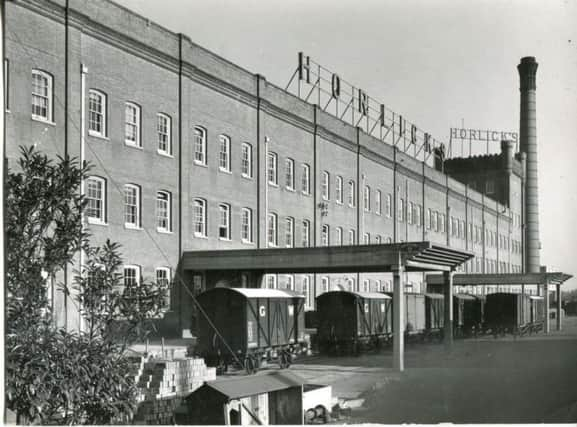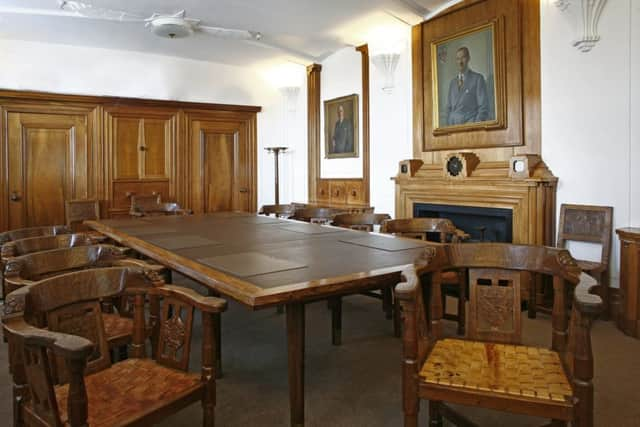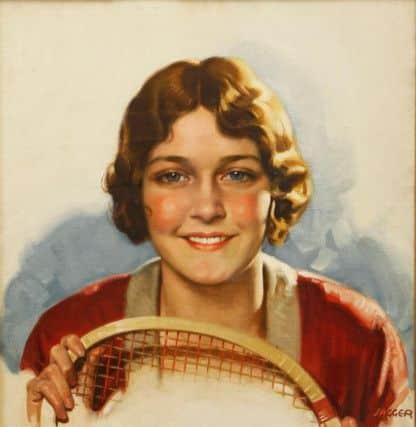Rare haul of '˜mouseman' furniture saved from old Horlicks factory


For more than a century, jars of Horlicks had rolled off the production line on Stoke Poges Lane, over the fields from Eton college.
Production moved to India last year, and the Edwardian building will soon be flattened to make way for 750 houses. But its clearance has yielded what could be biggest complete collection of oak furniture by the Kilburn craftsman Robert Thompson, whose “mouseman” trademark is a design classic.
Advertisement
Hide AdAdvertisement
Hide AdThe pre-war suite of boardrooms, still stunningly intact, has also thrown up rare examples of advertising art by the acclaimed South Yorkshire portraitist, David Jagger.


Thompson, who finished each piece of furniture in his moorland workshop with his signature mouse motif, had been commissioned in the 1930s to furnish the vast Horlicks building.
It was one of the nation’s best known and most profitable brand names, and no expense was spared. A boardroom table, sets of monks’ chairs, elaborate partners’ desks, coat stands and even typists’ desks were among more than 40 pieces turned out by hand from the studio in Kilburn.
“They are hugely collectable,” said John Black, a director of Sworders Auctioneers in Mountfitchet, Essex, which will sell the lots next month.
Advertisement
Hide AdAdvertisement
Hide Ad“It’s rare to see such a large collection coming on the market. You don’t usually see a sale from one collection or institution like this. The last time it happened was when the library furniture from Leeds Girls’ High School went on sale 10 years ago.”


Describing their discovery as “mind blowing”, he added: “You walked from room to room and there was Mouseman furniture everywhere. It was just extraordinary.”
The highlights include a personalised dresser, bearing the date 1930, which is valued at up to £8,000, and a partners’ desk at up to £6,000. Even a hat rack engraved with the mouseman imprint is worth a possible £800.
The furniture was contained in a section of the old factory preserved for meetings and separate from the rows of modern computer desks, he said.
Advertisement
Hide AdAdvertisement
Hide AdAlso there was a collection of artwork from the days when a Horlicks poster was to be found in every grocer’s shop, and its adverts – “the food drink of the night” – were a staple on Radio Luxembourg. The most famous depicts a rosy-cheeked woman holding a tennis racquet, which appeared in Good Housekeeping in 1928, with the banner, ‘Life is fun when you’re fit’.
They are among the early works of the Rotherham-born Jagger, who trained at Sheffield School of Art and went on to have Churchill, Queen Mary, the Duke of Edinburgh and the actress Vivien Leigh sit for him.
Horlicks had commissioned him in its heyday to produce images for magazines that would illustrate the health benefits of a good night’s sleep.
“Jagger is becoming more and more collectable,” Mr Black said. “His self-portrait sold for more than £200,000 last year. His advertisements won’t be in the same class but they they’ve got the same workmanship, the same use of paint.”
Advertisement
Hide AdAdvertisement
Hide AdDespite Jagger’s use of an English rose complexion to sell Horlicks, the drink is actually an American invention, dating from 1883.
It began to be sold in Britain in 1890, around 15 years before James Horlick bought a patch of green field from Eton college and put up his factory there, at a cost of £28,000. By 1969, it produced 30m lbs of powdered, malted milk a year.
In the 1950s its makers tried to entice a younger audience by pairing it with the comic strip character Dan Dare and running a “spacemen’s club”.
Its biggest market today is India, where it was originally taken by British soldiers during and after the First World War.
Advertisement
Hide AdAdvertisement
Hide AdIts owner, GlaxoSmithKline, announced plans to sell the brand last year, at the same time as the axe fell on the factory.
The auction of its contents will take place on October 9, with bidding online and in person.